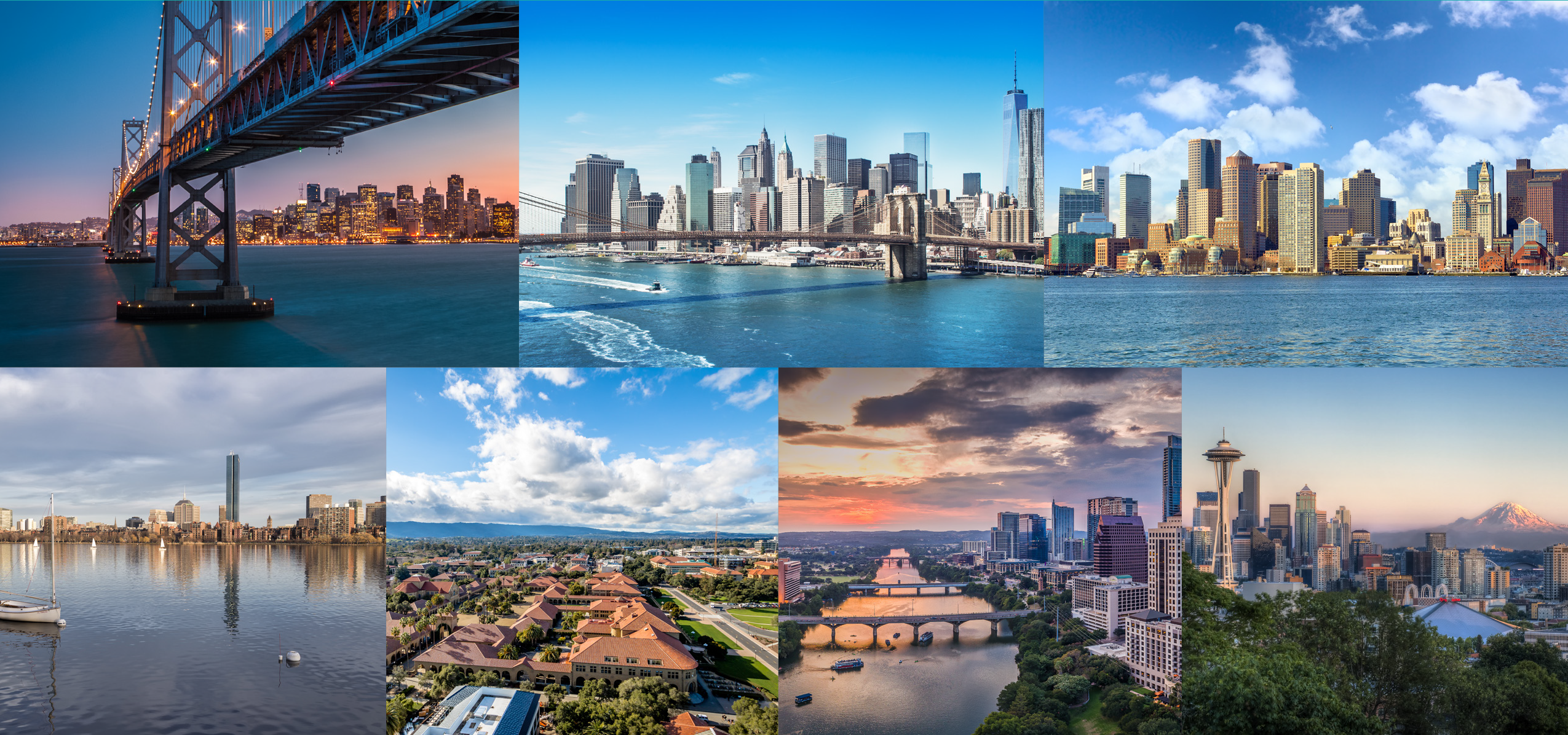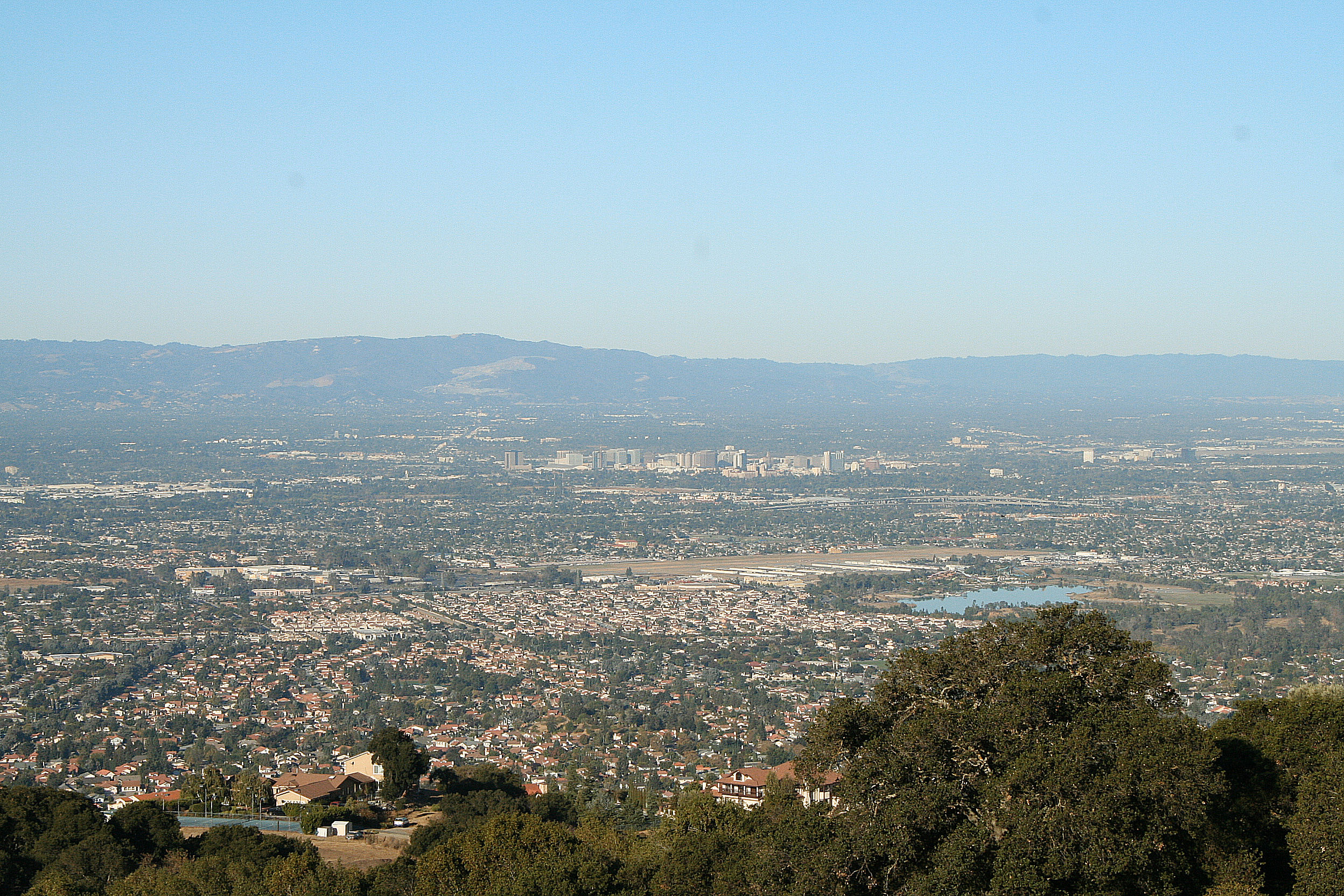Are startup hubs exclusive to a handful of U.S. cities? Or is high-technology entrepreneurship spreading throughout the country? To answer these questions, the McNair Center recently published The Top 100 U.S. Startup Cities in 2016, ranking startup activity by tracking venture capital deals in U.S. cities. The report found that roughly 70% of startup activity is concentrated in 50 American cities. While the top seven U.S. cities for entrepreneurship are San Francisco, New York City, Boston, Cambridge, Palo Alto, Austin and Seattle, startup clusters are also forming in many American cities.
There are several rankings of startup activity. While these rankings use different methodologies, the results point toward the same trends in startup activity. This blog post compares the McNair Center’s methodology and that of rankings published by the Kauffman Foundation, City Lab /Martin Prosperity Institute and Startup Genome. We also identify the consistent themes across the rankings.
Kauffman Foundation: Startup Activity by Rate of New Entrepreneurs
The Kauffman Foundation ranks U.S. metropolitan areas by new business creation activity and the number of people engaging in business startup activity, using the following three metrics: the rate of new entrepreneurs, the opportunity share of new entrepreneurs and startup density.
The rate of new entrepreneurs measures the percentage of the adult population of an area that became entrepreneurs each month. Opportunity share of new entrepreneurs provides the percent of new entrepreneurs who were employed before starting their business; this metric tracks entrepreneurs who started their own businesses because they saw a market opportunity. Startup density is the number of startup firms per 1,000 companies. Startup firms are defined here as as small businesses that are less than one year old and employee one person in addition to the owner. This web-based ranking is dynamic, and the data can be downloaded. Users have several options such as measuring startup activity by larger or smaller states and by growth entrepreneurship. While the overall rank is a weighted average, users can also change the ranking for each individual measure.
City Lab / Martin Prosperity Institute: Measuring Global Venture Capital
A 2016 ranking prepared by City Lab with the help of the Martin Prosperity Institute provides the geography of venture capital investment in high-tech startups for more than 200 U.S. metro areas for 2016. This analysis ranks metro areas in terms of the total dollar amount of VC investment, as well as their share of national venture investment. The ranking provides individual rankings for venture capital investment, deal share and venture investment per capita. According to their findings, “No matter how you slice it, venture capital-backed high technology remains spiky, and if anything, it may be getting spikier.”
The Martin Prosperity Institute’s 2015 ranking, The Rise of the Global Startup City, finds that the U.S. accounts for nearly 70% of total venture capital worldwide, followed by Asia (14.4%) and Europe (13.5 %). Both the 2016 and 2015 rankings rely on venture capital investment in absolute numbers and percentage as their key measure for startup activity.
Startup Genome: Global Focus with Eight Success Factors
Startup Genome has identified eight factors that drive the growth of high-technology firms: funding, market reach, global connectedness, technical talent, startup experience, resource attraction, corporate involvement, founder ambition and strategy. Startup Genome’s ranking assesses 55 startup ecosystems across 28 countries and ranks the top 20 for 2017. Analyzing roughly 100 metrics that measure the eight external and internal factors, Startup Genome measures startup performance by growth over the first years of operation.
The top five regions in the 2017 ranking are Silicon Valley, New York City, London, Beijing and Boston. Startup Genome finds that greater global connectedness leads to higher ecosystem performance. Startups’ ability to reach out outside their own ecosystems highly correlates with attracting global customers.
McNair Center for Entrepreneurship and Innovation: Measuring U.S. Venture Capital
Our research paper analyzes startup activity based on three venture capital metrics: the dollars invested, which measures the total amount of growth-oriented venture capital invested into startup firms in a city; the number of new deals, which looks at the number of startups that received their first-ever round of venture capital financing; and the number of startups backed by venture capital, which gauges the overall scale of a city’s ecosystem.
We ranked cities on each of these three measures for 2016 and then assigned them an overall rank by equally weighting the component metric rankings. Our methodology is similar to the global ranking produced by City Lab/Martin Prosperity Institute, but we create a composite ranking of U.S. cities based on the weighted average of each measure, while City Lab/Martin Prosperity Institute publishes individual rankings for each metric.
Common Trends
The top 20 cities for each ranking is compiled in Figure 1. Across all the rankings, startup activity is highly concentrated in a handful of U.S. cities. The global assessment done by Startup Genome shows that the U.S. leads the world in high-technology entrepreneurship.
Other trends include:
• San Francisco ranks number one for McNair and City Lab/Martin Prosperity
• New York City takes the second spot for McNair, City Lab/Martin Prosperity and Startup Genome
• Boston-Cambridge, San Francisco Bay Area/Silicon Valley, Austin, Seattle, Chicago and Los Angeles are consistently the U.S. cities with the highest rankings across the four studies
• California cities are spread all over the rankings, confirming the spillover effect in the San Francisco Bay Area
• San Francisco and Silicon Valley are at the top of all of the rankings except for the Kauffman Foundation. The Kauffman Foundation ranking measures entrepreneurship by new business creations, which combines small businesses and startups. For example, the Houston metropolitan area has the 9th spot on the Kauffman Foundation ranking, yet it is not shown as part of the top 20 in any other of the rankings. This result reflects a high rate of small business creation in Houston, not its startup ecosystem.

Conclusion: Why Is Venture Capital Our Preferred Measure?
Venture capital provides comparable and systematic information on investment that can be directly linked to specific geographical locations. The amount of venture capital invested in an area shows the supply of financial capital available in the ecosystem.
Venture capitalists invest in high-tech, high-growth startups, not small businesses. This difference is key to assessing the innovation taking place in any given area. High levels of venture capital indicate that there is a healthy demand for this kind of financial capital. This increased competition creates the virtuous cycle that feeds a top ecosystem.



